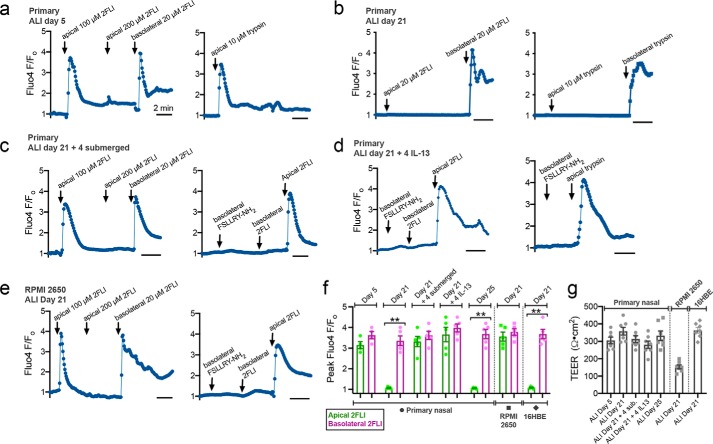Figure 6.
Polarization of PAR-2 signaling in ALIs. a–d, primary human nasal ALIs loaded with Fluo-4 were stimulated apically or basolaterally with PAR-2 agonist 2FLI or trypsin. ALIs at day 5 (before ciliogenesis) responded to apical 2FLI (a, left) or trypsin (a, right). Basolateral 2FLI elicited further response after apical saturation, suggesting two physically separate PAR-2 pools (a, left). Responses to apical 2FLI or trypsin were lost by day 21 (b) but regained after subsequent 4 days of submersion (c) or basolateral IL-13 (d). Apical responses to 2FLI were observed even with basolateral PAR-2 antagonist (FSLLRY-NH2; 100 μm), supporting distinct PAR-2 pools. Representative traces are shown from single ALIs. e, RPMI 2650 squamous ALIs exhibited responses to apical 2FLI. Subsequent application of basolateral 2FLI or inhibition of basolateral PAR-2 with FSLLRY-NH2 also suggest physically separated apical versus basolateral PAR-2 pools. f, quantification of peak Fluo-4 F/Fo from experiments as in a–e (mean ± S.E.; 5–7 experiments using ALIs each different patients). Significance was determined by one-way ANOVA with Bonferroni post-test comparing apical versus basolateral 2FLI; **, p < 0.01. g, TEER from cultures used in a–f confirmed 4 days of submersion or IL-13 did not disrupt the epithelial barrier. Significance was determined by one-way ANOVA with Bonferroni post-test.

